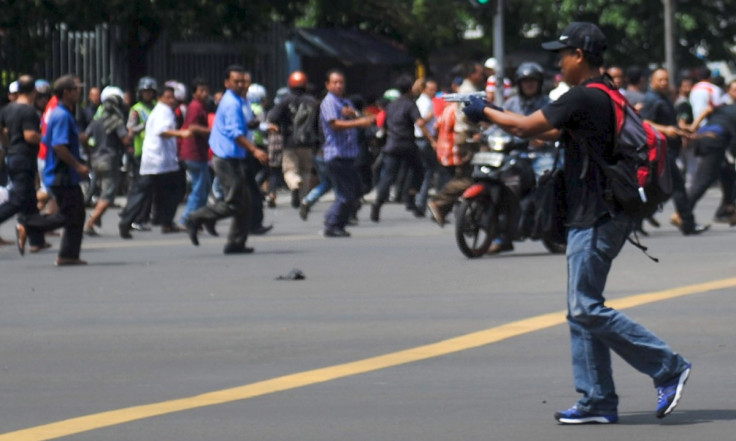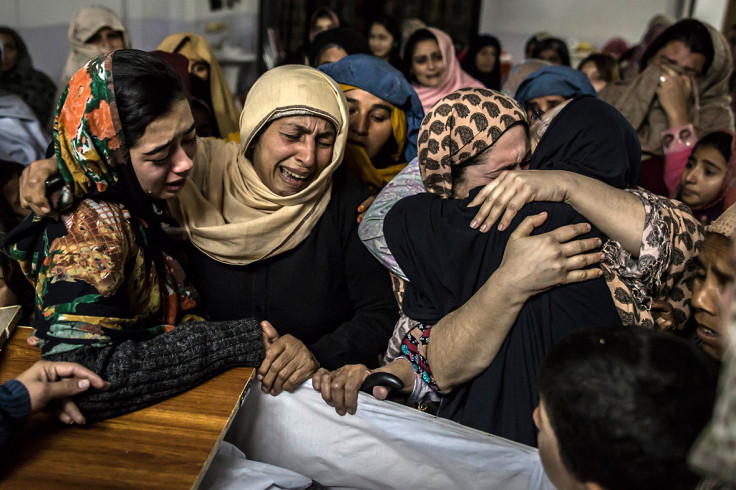What is the Isis 'wolf pack'? How marauding terrorists brought chaos and death to Paris, Jakarta and Baghdad

On 20 November 1979 armed gunmen stormed the Grand Mosque in Mecca and fought a brutal two-week battle with Saudi Arabian soldiers that left some 400 people dead. Led by a Sunni radical Juhayman al-Otaybi, the fanatics hated the ruling al-Saud family and believed that one of their number, Mohammed Abdullah al-Qahtani, was the Muslim "Mahdi" – the redeemer of Islam – who would herald the end of the world.
The messianic vision of al-Otaybi's band of fanatical followers has found its expression in many terrorist movements since, not least Islamic State (Isis/Daesh), whose brand of brutal and apocalyptic violence has brought murder to the streets of Paris, Baghdad, Beirut and Jakarta in the past few months alone. Daesh terrorism has its echoes in both the ideology and the methods of Otaybi and dozens of similarly-minded radicals since.
What the Siege of Mecca, Mumbai, Paris, Baghdad and now Jakarta have in common is the desire on the part of the perpetrators to kill as many people as possible before being killed themselves
On 12 January heavily armed militants wearing suicide vests attacked a busy shopping centre in Baghdad, detonating a car bomb before going on a shooting spree that killed at least 18 people and injured dozens more. Just two days later another marauding gang of men brought chaos to the streets of Jakarta, killing two people. In November, a gang of Islamist fanatics brought chaos to the streets of Paris, killing 130 people.
It is a technique that 19th-century anarchists might have called propaganda by the deed. Aside from broad demands to cease selling oil to the US, the 1979 Grand Mosque attackers had little objective other than to bring about the End of Days – indeed, al-Qahtani is said to have walked into oncoming Saudi gunfire, so convinced was he of his status as Mahdi. Unsurprisingly he was dead moments later.
Likewise in Paris, Jakarta and Beirut, the gunmen made no demands, spraying gunfire indiscriminately into cafés, bars and crowds as they attempted to kill as many civilians as possible. In Baghdad, the militants that attacked a mall in a prominent Shia area of the city wore suicide vests that they detonated as police closed in, in Paris those that didn't blow themselves up after the shooting rampage fought a brutal last stand in a flat two days later.

The attacks in Paris, Jakarta and Baghdad have popularised a new terminology: Marauding Terrorist Firearms Attacks, or MTFAs, but in reality the threat of terrorist gangs taking to the streets on indiscriminate killing rampages is no new phenomenon. In 2004, four al-Qaeda members killed 22 people in a gun rampage in al-Khobar, Saudi Arabia, most of them foreign oil workers. Then in 2008, 10 members of Lashkar el-Taiba killed 164 people in eight attacks in Mumbai – the worst terrorist atrocity to hit India in decades.
"The violent extremism of 'al-Qaeda-ism' co-opted by Isis continues – in the very least – to inspire lone wolves and wolf packs and even organised networks in disparate places around the world," said Robert McFadden, a terrorism expert at Deloitte and former FBI counterterrorism agent.
What the Siege of Mecca, Mumbai, Paris, Baghdad and now Jakarta have in common is the desire on the part of the perpetrators to kill as many people as possible before being killed themselves. Unlike suicide bombings such as those in Madrid and London in 2004 and 2005 and Beirut, Kabul and Baghdad countless times since, wolf pack attackers have used small arms to prolong their atrocities and maximise their chaotic impact.
Fear of fanatical gangs of terrorists bringing their chaos to the streets of London has led the Metropolitan Police to announce that it will be increasing its numbers of firearms officers while in Paris and other European capitals the number of armed police on the streets has increased.
Rita Katz, director of SITE Intel Group, said that the wolf pack tactic was nothing new in terrorist atrocities either in Europe or in Asia. She pointed out that the attack in Jakarta was clearly well-organised and was immediately claimed by IS, which shows the leadership knew it was going to happen ahead of time. This was not simply a case of IS claiming responsibility after the fact.
"IS will use any technique to create the largest number of casualties, even at the attackers' expense, and they will always try to come up with new ways to do so. You see the same aim in attacks in Iraq and elsewhere, in which fighters detonate a bomb and then detonate another after people have gathered at the aftermath," she said.
Katz said it was difficult to prevent future attacks given there are so many disparate terrorist groups but that the authorities would be well placed to watch out for new pledges of allegiance as indicators of future operations. Within two days of IS declaring its Caliphate, she said, an Indonesian jihadi group called Mujahidin Indonesia Timur, pledged allegiance to the group and IS accepted the pledge.
"Being that Isis has grown to a worldwide movement with lone wolves and cells in an array of different countries, it's very difficult to stop these attacks. [...] That stated, the Indonesia attack didn't come from out of nowhere. Often times, pledges like this give strong alarms as to which countries in certain regions are at high risk of attacks."
© Copyright IBTimes 2024. All rights reserved.






